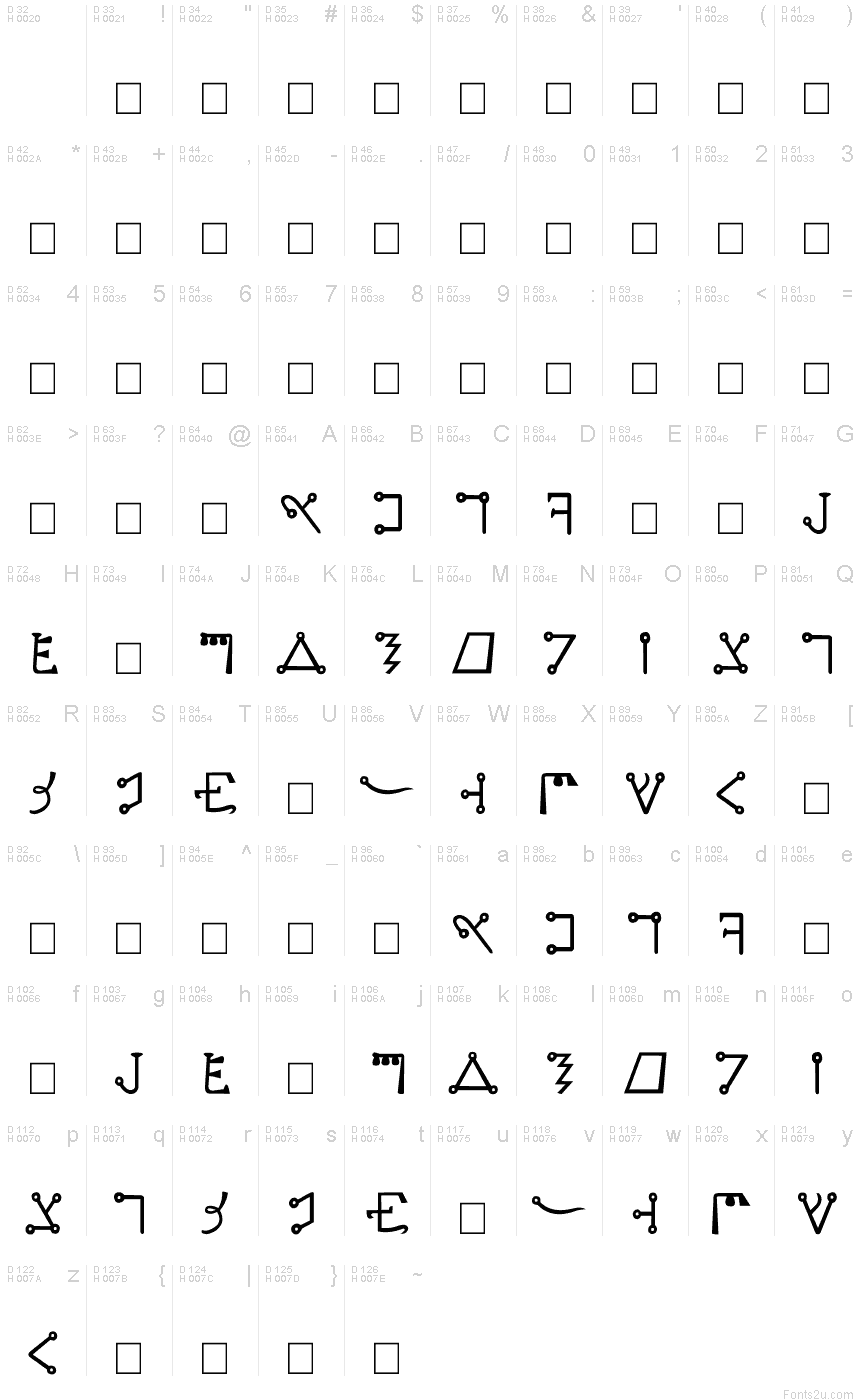Passage du Fleuve
TrueTypeUso personale
- Accenti (parziale)
- Euro
Passage-du-Fleuve.ttf
Tag
Mappa caratteri
Si prega di utilizzare il menu a tendina per visualizzare le mappe di caratteri diversi contenuti in questo tipo di font.

Informazioni di base caratteri
Dichiarazione di Copyright
© 2002 Daniel U. Thibault. All Rights Reserved.
Font famiglia
Passage du Fleuve
Font sottofamiglia
Regular
Sottofamiglia unico di identificazione
Urhixidur:Passage du Fleuve Regular:2002
Nome completo del font
Passage du Fleuve
Nome tabella versione
Version 1.00; 2002 August 28
Postscript nome del font
Passage_du_Fleuve
Fabbricante
Progettista
Daniel U. Thibault
Descrizione
Passage du Fleuve 2002 1.00
A medieval (circa XIIth-XVth century) occult script derived from Hebrew. The French name means "Passing the River" and is probably an allusion to Deuteronomy, Chapter II, Verses 13-16, where Moses leads Israel across the river Zered into Canaan. With the Celestial and Malachim/Angelic/Royal scripts, it forms the Seraphic family of scripts. It is currently used by some Wiccan practitioners.
Passage du Fleuve is included by Heinrich Cornelius Agrippa in Book III (Ceremonial Magic), Chapter XXX («Another manner of making Characters, delivered by Cabalists») of his De Occulta Philosophia (written in 1509 and first printed in 1533), unfortunately without mentioning any details. Francis Barrett derived the alphabet from Agrippa, along with much of the text of Agrippa's book, and presented it in his «The Magus: A Complete System of Occult Philosophy», published in 1801.
A medieval (circa XIIth-XVth century) occult script derived from Hebrew. The French name means "Passing the River" and is probably an allusion to Deuteronomy, Chapter II, Verses 13-16, where Moses leads Israel across the river Zered into Canaan. With the Celestial and Malachim/Angelic/Royal scripts, it forms the Seraphic family of scripts. It is currently used by some Wiccan practitioners.
Passage du Fleuve is included by Heinrich Cornelius Agrippa in Book III (Ceremonial Magic), Chapter XXX («Another manner of making Characters, delivered by Cabalists») of his De Occulta Philosophia (written in 1509 and first printed in 1533), unfortunately without mentioning any details. Francis Barrett derived the alphabet from Agrippa, along with much of the text of Agrippa's book, and presented it in his «The Magus: A Complete System of Occult Philosophy», published in 1801.
Informazioni estese caratteri
Piattaforme supportate
PiattaformaCodifica
UnicodeUnicode 1.0 semantica
MacintoshRomano
MicrosoftUnicode BMP solo
Dettagli carattere
Creato2002-08-17
Revisione1
Contatore glifi248
Unità per em2048
Incorporare i dirittiIncorporamento per l'editing consentito
Classe famigliaSimbolico
PesoNormale
AltezzaNormale
Mac styleGrassetto
DirezioneSolo fortemente sinistra a destra glifi + contiene neutrali
Disegno naturaRegolari
InclinazioneVario